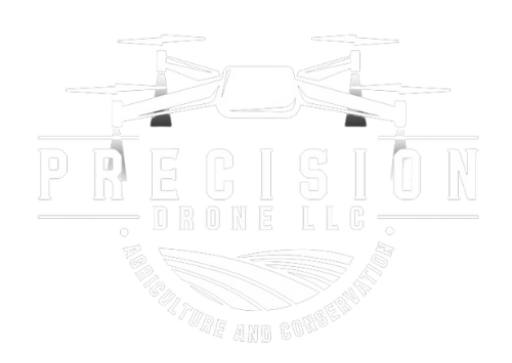Elevate Your Environmental and Conservation Efforts with Advanced Drone Technology
In today’s rapidly evolving world, the integration of technology into environmental and agricultural sectors has never been more critical. At Precision Drone LLC, we are at the forefront of this transformation, offering precision drone services that empower Michigan farmers, conservationists, and landowners to achieve unprecedented levels of efficiency and sustainability. Our advanced drone technology delivers comprehensive solutions, from crop monitoring and precision spraying to environmental surveying and aerial mapping, all designed to optimize operations while minimizing environmental impact. As we delve into the myriad ways these cutting-edge tools can elevate your environmental and conservation efforts, discover how embracing farm drone technology can redefine productivity and stewardship of natural resources.
Revolutionizing Agriculture with Drones
The agricultural sector is experiencing a major transformation through the integration of drone technology. These advancements are reshaping how farmers manage crops, monitor conditions, and enhance yields. At the core of this shift is the use of precision drone services to boost productivity and sustainability.
Precision Crop Monitoring Techniques
Precision crop monitoring involves using drones to gather detailed data about crop health. Equipped with various sensors, drones can detect changes in vegetation that may indicate pest infestations, nutrient deficiencies, or water stress, allowing for timely interventions.
By providing real-time insights, drones help farmers make informed decisions. This process begins with drones flying over crop fields, capturing images and data, which are then analyzed to pinpoint problem areas.
Through this approach, farmers can take targeted actions, such as adjusting irrigation or applying nutrients, enhancing overall crop health and yield.
Advanced Multispectral Imaging Benefits
Multispectral imaging is a cutting-edge technique that drones use to assess crop conditions. This involves capturing images at different wavelengths to analyze plant health, soil conditions, and more.
Multispectral data provides a wealth of information, helping identify areas needing attention. For instance, infrared imaging can detect plant stress before it’s visible to the naked eye, allowing for preemptive measures.
With the ability to cover large areas quickly, drones equipped with this technology are invaluable for large-scale farming operations, significantly enhancing efficiency and precision.
Enhancing Yields with Targeted Interventions
Drones play a crucial role in improving crop yields through targeted interventions. By identifying specific areas that require attention, farmers can apply resources more effectively, reducing waste and increasing productivity.
The process involves using drones to gather data, analyze it for potential issues, and then applying precise solutions. This targeted approach means farmers can focus on problem areas without affecting the entire field.
Such precision in interventions leads to healthier crops, better yields, and more sustainable farming practices, benefiting both the environment and the economy.
Cutting-Edge Conservation Solutions
Drone technology is also making waves in conservation, offering eco-friendly solutions for environmental monitoring and management. These tools aid in protecting natural habitats, tracking wildlife, and supporting sustainable resource management.
Eco-Friendly Environmental Surveying
Environmental surveying using drones is a game-changer for conservation efforts. Drones collect data without disturbing ecosystems, allowing conservationists to monitor changes and assess impacts over time.
Non-intrusive data collection ensures minimal disruption to wildlife and habitats. Drones capture images and data from above, helping track changes in vegetation, water levels, and other critical factors.
This method supports informed decision-making, aiding conservationists in developing strategies to preserve natural areas effectively.
Tracking Wildlife with Drone Technology
Tracking wildlife has become more efficient with drones, which provide a bird’s-eye view of landscapes. This technology allows conservationists to monitor animal movements and behaviors with minimal intrusion.
Drones equipped with thermal cameras can track nocturnal and camouflaged species, providing invaluable data for research. This approach enhances our understanding of wildlife patterns and helps in preserving endangered species.
Real-time aerial data aids in quick decision-making, ensuring timely interventions to protect wildlife effectively.
Supporting Forestry and Wetland Management
Drones offer significant benefits for forestry and wetland management. They provide detailed views of large areas, helping in the assessment and planning of resource management strategies.
Using drones for aerial mapping, managers can identify areas affected by disease, fire, or illegal activities. This data supports sustainable practices by informing reforestation efforts and water management plans.
Ultimately, drone technology enhances the capacity to maintain healthy and thriving ecosystems, promoting biodiversity and environmental resilience.
Advanced Drone Spraying Methods
Drones have revolutionized spraying methods in agriculture, offering precision and efficiency in applying fertilizers, herbicides, and pesticides. This approach reduces chemical waste and promotes sustainable farming practices.
Precision Fertilizer Application
Precision fertilizer application using drones allows for targeted distribution, ensuring nutrients reach the areas where they’re most needed. This method saves resources and enhances crop health.
The process begins with drones capturing data to identify nutrient-deficient areas. Once identified, drones apply the fertilizer precisely, optimizing its use and effectiveness.
This targeted approach not only improves crop yields but also reduces environmental impact by minimizing runoff and over-application.
Reducing Chemical Waste with Drones
Drones help in reducing chemical waste by delivering precise applications of chemicals, minimizing excess use. This is crucial for both environmental sustainability and cost-effectiveness.
By focusing on specific areas, drones ensure that only the necessary amount of chemicals is used, preventing wastage. This method is not only efficient but also environmentally friendly.
Farmers benefit from cost savings and improved sustainability, while ecosystems benefit from reduced chemical exposure.
Sustainable Farming Innovations
Drones support sustainable farming innovations by enhancing resource management and reducing environmental impact. This technology is pivotal in promoting eco-friendly agricultural practices.
Innovations include integrating data analytics with drone technology to optimize planting, watering, and harvesting processes. This holistic approach ensures better resource use and lower environmental footprints.
By adopting these practices, farmers contribute to a more sustainable future while improving their productivity and profitability.
Comprehensive Land Surveying & Mapping
Drones are transforming land surveying and mapping, offering detailed assessments and insights for various development projects. This technology supports data-driven decision-making.
Detailed 3D Terrain Modeling
3D terrain modeling with drones provides accurate visualizations of landscapes, aiding in planning and development. These models are invaluable for infrastructure projects, offering precise topographical information.
Models are generated by drones capturing high-resolution images, which are processed to create detailed 3D maps. This data assists engineers and planners in making informed decisions.
Such comprehensive models enhance project outcomes, reducing errors and improving efficiency in planning stages.
Data-Driven Land Assessments
Data-driven land assessments enable precise evaluations of land potential and risks. Drones provide accurate data, supporting informed decision-making for development and conservation.
The assessment process involves drones capturing data, which is analyzed for factors like soil quality, vegetation, and water resources. This data informs land management strategies and development plans.
With accurate data at their fingertips, stakeholders can make better decisions, balancing development needs with environmental preservation.
Infrastructure Development Planning
Drones aid in infrastructure development planning by providing detailed site assessments and mapping. This information is crucial for designing and implementing projects efficiently.
Drones capture aerial views, offering insights into terrain and existing structures. This data supports effective project design, minimizing risks and maximizing resource use.
By integrating drone data into planning, developers can enhance project outcomes, ensuring timely and cost-effective completion.
Drone Technology in Search & Recovery
Drone technology offers significant advantages in search and recovery operations, providing efficient solutions for locating missing persons, livestock, and equipment.
Thermal Imaging for Efficient Searches
Thermal imaging is a powerful tool in search and recovery, allowing drones to detect heat signatures and locate targets quickly, even in challenging conditions.
Equipped with thermal cameras, drones can operate day or night, identifying heat sources from people to animals. This capability speeds up search efforts, increasing the chances of successful recoveries.
The technology’s efficiency reduces time and resource expenditure, making it invaluable for emergency and recovery operations.
Locating Livestock and Equipment
Drones assist in locating livestock and equipment by providing aerial views of large areas. This capability is crucial for farmers and landowners, saving time and reducing losses.
By capturing high-resolution images, drones can identify and track missing animals or equipment across vast landscapes. This process is more efficient and less labor-intensive than traditional methods.
Farmers benefit from quick recoveries and reduced operational disruptions, enhancing overall farm management.
Minimizing Time and Resource Use
Drones significantly minimize time and resource use in search and recovery operations. Their ability to cover large areas quickly makes them an ideal solution for efficient rescues and recoveries.
The efficiency is achieved through drones’ capability to survey areas rapidly, providing real-time data and visuals. This enables faster decision-making and action.
By reducing the time and resources needed for search efforts, drones offer a cost-effective and efficient solution, benefiting both operators and those in need of assistance.




